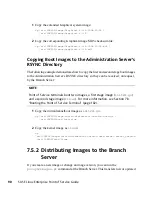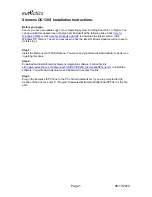
NOTE: Hardware Detection Program
The Point of Service hardware manufacturer provides a program for this
function.
2. Using this information, the
posleases2ldap.pl
script creates the control file,
hwtype.
MAC
.
For more information, see Section B.3.7, “posleases2ldap.pl” (page 215).
3. The linuxrc program uploads
hwtype.
MAC
to the Branch Server's upload directory,
/srv/tftpboot/upload
.
NOTE: Uploading of the Control File
The control file is uploaded to the TFTP server only when no configuration
file (
config.
MAC
) exists.
4. The hardware type identified in the
hwtype.
MAC
file is compared to the
scCashRegister
objects in the LDAP directory.
If a match is found, the information in
scCashRegister
and its associated ob-
jects is used to create the Point of Service terminal's
scWorkstation
object in
LDAP and its
config.
MAC
file in the Branch Server's
/srv/tftpboot/CR
directory. After the
config.
MAC
file is created, the
hwtype.
MAC
file is deleted.
If the hwtype is unknown, the information in the default
scCashRegister
object
is used to create the Point of Service terminal's
scWorkstation
object and
config.
MAC
file.
IMPORTANT: Default
scCashRegister
Object
This safety net feature works only if you have configured a designated de-
fault
scCashRegister
object in the LDAP directory. For information on
defining a default
scCashRegister
object, see Section 7.4.1, “Adding
an
scCashRegister
Object” (page 74).
Deploying Point of Service Terminals
101
















































